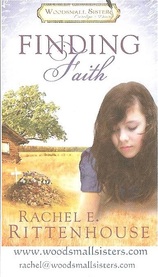I really have nothing to do with Finding Faith, other than to have taught its author, Rachel Rittenhouse, in an English class last year. I'm proud of the way Rachel wholeheartedly pursues her dreams at age 16, and I wish her the best as she launches this, her first book in a series of three. Visit her website to discover more.
Here's a quick children's lit. quiz. I'm going to name some main characters; you're going to name their author. Ready? Murdley Gurdson Princess Penelope Fluffy Tacky Wodney Wat Okay. What's your answer? Did you say Helen Lester? Ding. Ding. Ding. You are correct! Lester also has a book about herself. In Author: A True Story, she tells the good and the bad of becoming an author. Your young writers will see an experienced writer facing rejection, persevering, practicing, using the writing process, being frustrated, being inspired. They will see that they are much like Helen (well, except that they don't receive royalties for their work). Knowing that they are not alone may make a very difficult process just a tad easier to bear. Do you want books to help your students... ...learn the elements of literary analysis? ...study different genres? ...improve their reading and writing skills? I recommend Nancy Loewen's Writer's Toolbox series. So far, there are nine:
These books accomplish a lot. First, many of them include a stand-alone story. In Once Upon a Time, for instance, Loewen retells "Little Red Riding Hood." The story can be read and enjoyed all by itself. But then she adds blocks to most pages which explain the tools necessary for that particular genre. Again, in Once Upon a Time, Loewen shows that fairy tales need setting, characters, plot, dialogue, warnings, magic, greed, tricks, secret, repetition, mistakes, problem-solving, and a pleasing end. Phew! That sounds like an overwhelming list, but she keeps the descriptions brief, and she positions the story, so that it illustrates each tool she is explaining.
At the end of the books, she reviews the tools, gives "Getting Started Exercises," shares "Writing Tips," and directs readers to a Fact Hound site which lists related books and websites. There's no lack of nourishment for your language arts menu here. Focus on one book a month or intersperse a few of them with the other language arts activities you are doing. Whatever you choose, I'm pretty sure you'll leave the table satisfied. For an additional idea, see the assignment in Inspiration. |











 RSS Feed
RSS Feed